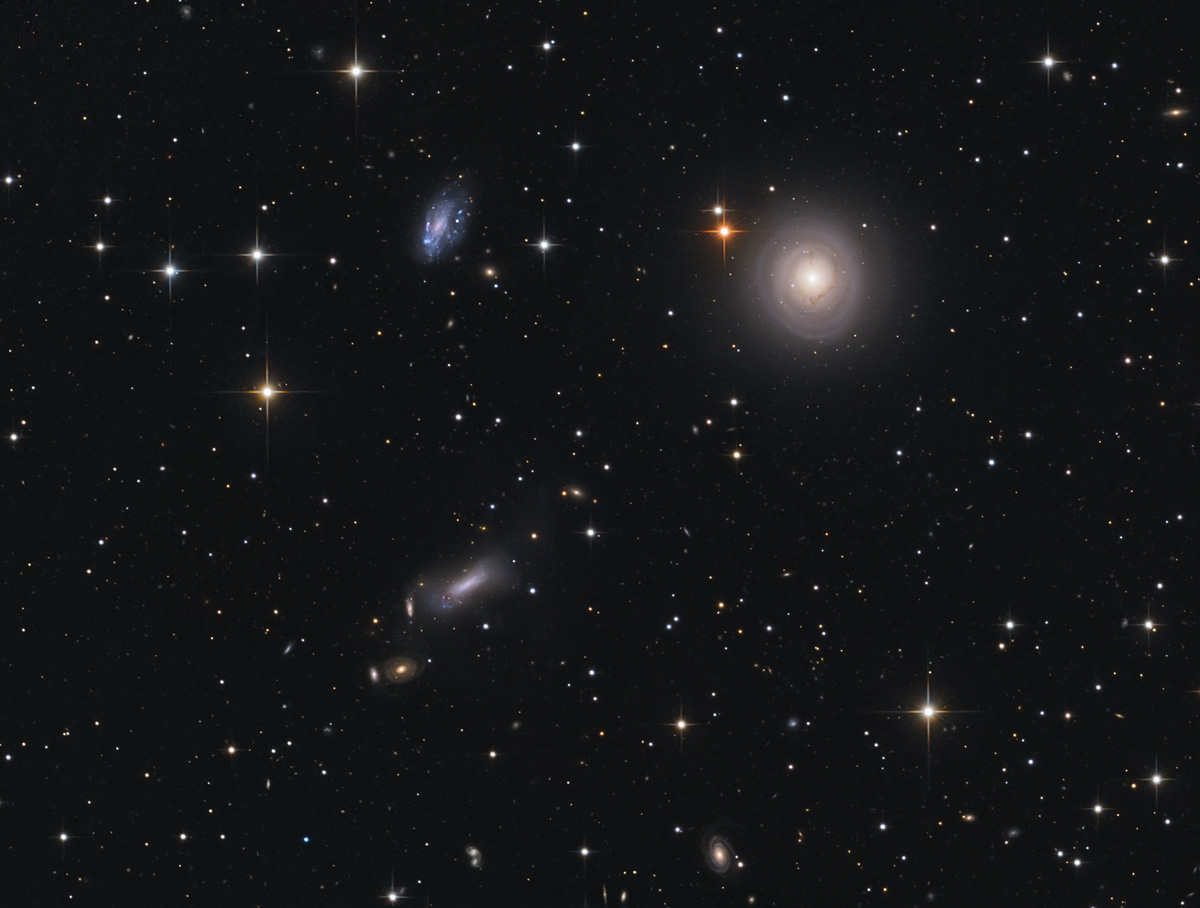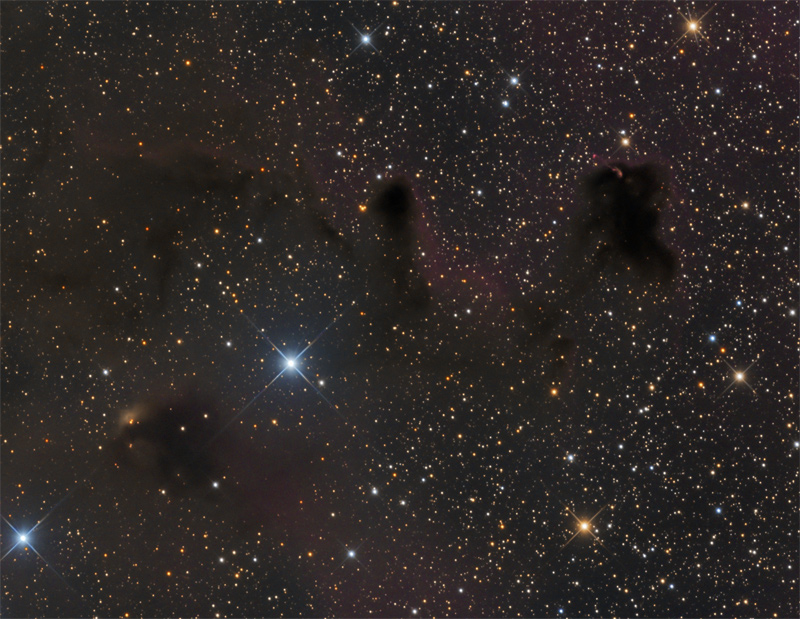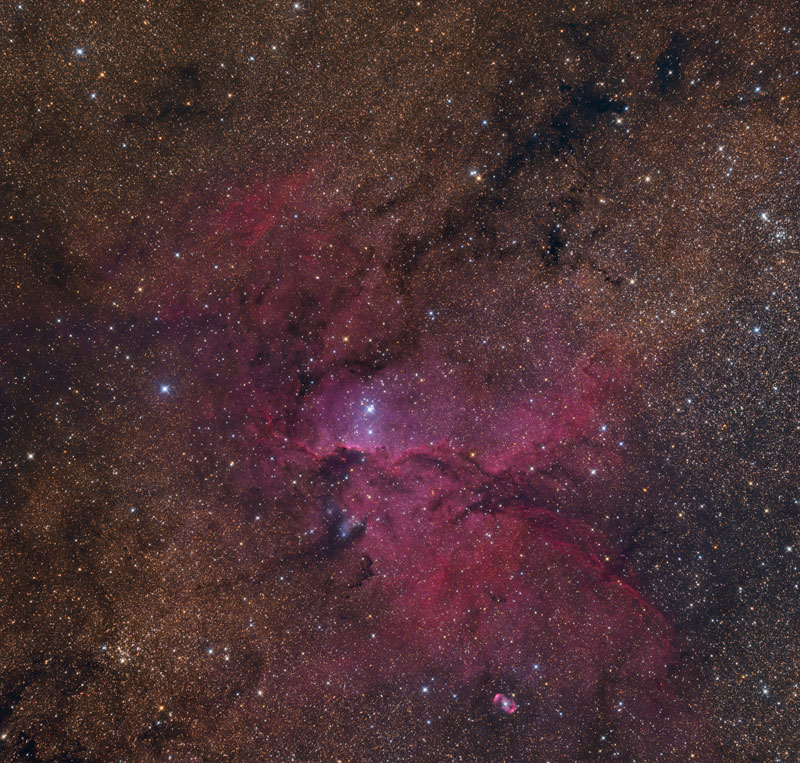Page 1 of 2
Found images: 2016 November
Posted: Mon Oct 31, 2016 10:03 pm
by Sandgirl
Have you seen a great image or video somewhere that you think would make a great APOD? Nominate it for APOD! Please post as much information here as you have about the image/video with a link to any source(s) for it you know of here, and the editors will take a look.
When posting the image itself, please do not post anything larger than a thumbnail here; please honor the copyright holder's copyright.
Please keep hotlinked images under 400K.
Thank you!
<< Previously
Re: Found images: 2016 November
Posted: Tue Nov 01, 2016 8:33 am
by starsurfer
NGC 6340
http://www.capella-observatory.com/Imag ... GC6340.htm
Copyright: Josef Pöpsel and Stefan Binnewies
Re: Found images: 2016 November
Posted: Tue Nov 01, 2016 8:38 am
by starsurfer
Re: Found images: 2016 November
Posted: Tue Nov 01, 2016 8:44 am
by starsurfer
Re: Found images: 2016 November
Posted: Fri Nov 04, 2016 5:02 pm
by starsurfer
Re: Found images: 2016 November
Posted: Sat Nov 05, 2016 4:31 am
by Ann
I absolutely love this stunning image by Rolf Olsen. Somehow I seem to remember that it has been an APOD, but I may be wrong. Look at the amazing detail, the shredded dust shards and tattered tidal tails of NGC 1316, the incredibly symmetrical spiral shape and inner ring of barred spiral NGC 1317, and the pink blobs and blue halo of starforming galaxy NGC 1310.
Wonderful!
Ann
ESO: An All-Seeing Eye (IC 2163, NGC 2207)
Posted: Mon Nov 07, 2016 3:51 pm
by bystander
An All-Seeing Eye (IC 2163, NGC 2207)
ESO Picture of the Week | 2016 Nov 07
Astronomers spend their time gazing out into the Universe — and occasionally the Universe seems to peer right back! This image, a composite of data from the Atacama Large Millimeter/submillimeter Array (ALMA) and the NASA/ESA Hubble Space Telescope, shows a very rare cosmic sight: a pair of interacting galaxies that have taken on an ocular structure.
As the name suggests, some types of grazing encounters between galaxies create shapes that resemble the human eye. While galaxy collisions of this type are not uncommon, only a few galaxies with eye-like, or ocular, structures have been observed. The paucity of these features is likely due to their very ephemeral nature — ocular structures like these tend to only last for several tens of millions of years, which is merely the blink of an eye in a galactic lifetime.
These two galaxies are named
IC 2163 (left) and
NGC 2207 (right) — IC 2163 displays the ocular structure in this image. The duo lies approximately 114 million light-years from Earth in the direction of the constellation of
Canis Major (
The Greater Dog).
The galaxies have brushed past each other — scraping the outer edges of their spiral arms —with IC 2163 passing behind NGC 2207. This glancing collision triggered a tsunami of stars and gas in IC 2163, with material in the outer portions of the disc of the galaxy travelling inwards This colossal wave of material decelerated rapidly moving from the outer to the inner edge of the eyelids and crashed midway through the galaxy’s disc, producing dazzling ribbons of intense star formation and compressed ridges of gas and dust that resemble a pair of cosmic “eyelids”.
http://asterisk.apod.com/viewtopic.php?t=36543
HEIC: A Greedy Giant (NGC 1222)
Posted: Mon Nov 07, 2016 4:00 pm
by bystander
A Greedy Giant (NGC 1222)
ESA Hubble Picture of the Week | 2016 Nov 07
NGC 1222, seen in this image taken with the Wide Field Camera 3 (
WFC3) on board the NASA/ESA Hubble Space Telescope (
HST), is a galaxy with a rather eventful story to tell. NGC 1222 has been described as a peculiar example of a type of galaxy known as a
lenticular galaxy. Typically, this kind of galaxy would present a rather smooth appearance on the sky and would consist mostly of old, reddish stars. A bit dull, perhaps.
But NGC 1222 is certainly not a typical member of its class — and it’s anything but dull. Observations show the characteristic features of very recent star formation on a huge scale — an event known as a
starburst. The reason for all this violent activity is caused by the fact that NGC 1222 is not alone. It actually contains three compact regions, each of which appears to be the central nucleus of a galaxy. Astronomers think that NGC 1222 is in the process of swallowing up two much smaller dwarf galaxies that strayed too close to it. It is likely that the encounter was the trigger for the starburst in NGC 1222, bringing in fresh supplies of gas that are now fuelling the burst of star formation.
Although its peculiarities were first seen in photographic images, these were not able to reveal the level of fine detail that can be recovered by Hubble. The image taken by Hubble allows us to see an astonishing amount of structure in this galaxy, emphasising its colourful history. Against the smooth background of old stars that was the original lenticular galaxy, we can clearly see dark filaments of dust and bright filaments of gas, both associated with the powerful star formation process.
Re: Found images: 2016 November
Posted: Mon Nov 07, 2016 5:16 pm
by Ann
NGC 1222 is a very interesting galaxy. Clearly it is very much too blue for an elliptical/lenticular galaxy. Its U-B index is -0.140 and its B-V index 0.600. The U-B index, in particular, is quite ultraviolet. The new NASA/Hubble picture really shows why.
Cen A, NGC 5128. Photo: Robert Gendler, Roberto Colombari
Image Data: Hubble Space Telescope, European Southern Observatory
To me, NGC 1222 looks quite a bit like another version of Cen A, NGC 5128, minus the jets from the central black hole.
Ann
Re: Found images: 2016 November
Posted: Mon Nov 07, 2016 6:58 pm
by starsurfer
Re: Found images: 2016 November
Posted: Mon Nov 07, 2016 7:00 pm
by starsurfer
NGC 602
http://www.chart32.de/index.php/component/k2/item/200
Copyright: CHART32
Processing: Johannes Schedler
Re: Found images: 2016 November
Posted: Mon Nov 07, 2016 7:08 pm
by starsurfer
Sandqvist 111
http://www.astrophoton.com/sandqvist111.htm
Copyright: CEDIC
Processing: Herbert Walter
Sandqvist 111 is the dark cloud on the top right that includes the Herbig Haro object HH 46-7. The dark cloud on the top left is Sandqvist 112 and the dark nebula at bottom left is catalogued as TGU H1713.
Re: Found images: 2016 November
Posted: Tue Nov 08, 2016 6:35 pm
by starsurfer
Re: Found images: 2016 November
Posted: Mon Nov 14, 2016 2:17 pm
by starsurfer
Re: Found images: 2016 November
Posted: Mon Nov 14, 2016 2:18 pm
by starsurfer
NGC 7814
http://astro-koop.de/?attachment_id=1600
Copyright: Stefan Heutz, Wolfgang Ries and Michael Breite
Re: Found images: 2016 November
Posted: Mon Nov 14, 2016 2:21 pm
by starsurfer
LBN 438
http://www.astrobin.com/268662/0/
Copyright: Tommy Nawratil
The background emission nebulosity belongs to the emission nebula Sh2-126.
Re: Found images: 2016 November
Posted: Mon Nov 14, 2016 2:24 pm
by starsurfer
M15
http://www.chart32.de/index.php/component/k2/item/220
Copyright: CHART32
Processing: Bernd Flach-Wilken
Re: Found images: 2016 November
Posted: Mon Nov 14, 2016 2:27 pm
by starsurfer
Re: Found images: 2016 November
Posted: Mon Nov 14, 2016 2:29 pm
by starsurfer
HEIC: A Subtle Swarm (NGC 4789A)
Posted: Mon Nov 14, 2016 3:00 pm
by bystander
A Subtle Swarm (NGC 4789A)
ESA Hubble Picture of the Week | 2016 Nov 14
This Hubble image shows
NGC 4789A, a
dwarf irregular galaxy in the constellation of
Coma Berenices. It certainly lives up to its name — the stars that call this galaxy home are smeared out across the sky in an apparently disorderly and irregular jumble, giving NGC 4789A a far more subtle and abstract appearance than its glitzy
spiral and
elliptical cousins.
These stars may look as if they have been randomly sprinkled on the sky, but they are all held together by gravity. The colours in this image have been deliberately exaggerated to emphasise the mix of blue and red stars. The blue stars are bright, hot and massive stars that have formed relatively recently, whereas the red stars are much older. The presence of both tells us that stars have been forming in this galaxy throughout its history.
At a distance of just over 14 million light-years away NGC 4789A is relatively close to us, allowing us to see many of the individual stars within its bounds. This image also reveals numerous other galaxies, far more distant, that appear as fuzzy shapes spread across the image.
Re: HEIC: A Subtle Swarm (NGC 4789A)
Posted: Wed Nov 16, 2016 6:51 am
by Ann
bystander wrote:A Subtle Swarm (NGC 4789A)
ESA Hubble Picture of the Week | 2016 Nov 14
This Hubble image shows
NGC 4789A, a
dwarf irregular galaxy in the constellation of
Coma Berenices. It certainly lives up to its name — the stars that call this galaxy home are smeared out across the sky in an apparently disorderly and irregular jumble, giving NGC 4789A a far more subtle and abstract appearance than its glitzy
spiral and
elliptical cousins.
These stars may look as if they have been randomly sprinkled on the sky, but they are all held together by gravity. The colours in this image have been deliberately exaggerated to emphasise the mix of blue and red stars. The blue stars are bright, hot and massive stars that have formed relatively recently, whereas the red stars are much older. The presence of both tells us that stars have been forming in this galaxy throughout its history.
At a distance of just over 14 million light-years away NGC 4789A is relatively close to us, allowing us to see many of the individual stars within its bounds. This image also reveals numerous other galaxies, far more distant, that appear as fuzzy shapes spread across the image.
How interesting! Thanks for posting this, bystander! (And thanks for processing the picture, Geck, if it is your work!)
To me, the most striking aspect of this galaxy, bearing in mind that it is classified as an irregular, is its lack of large, bright, blue clusters. Many other irregular galaxies are sporting magnificent blue blotches of young star formation. Not so NGC 4789A.
And yet - and yet!!! - the colors of this galaxy are extremely blue. Its U-B index is -0.270 and its B-V is 0.300. Of these two color indexes, the B-V index is the most remarkable. Compare with spiral galaxy
NGC 3310, whose U-B index is -0.430 (that's remarkable!), but its B-V index is "only" 0.350.
The explanation is that NGC 3310 is bursting with ultraviolet star formation, but it also has a substantial old yellow population which dilutes the blue color that goes with the ultraviolet star formation. NGC 4789A, by contrast, has only small amounts of star formation, but on the other hand it lacks a really substantial population of old yellow stars. Does it have any old yellow stars at all? Oh yes, it does. Do these old stars contribute a lot of light? No, they certainly don't, because it takes really large numbers of old stars to make much light, since they are so intrinsically faint. And that's why a relatively small number of young bright blue stars can outshine its old yellow forebears and give the entire galaxy a bluish cast.
This, of course, is something you only see in faint galaxies. Any galaxy with a high surface brightness also has a substantial underlying yellow population, that is my firm belief - well, with the possible exception of NGC 4656, seen
here in an image by Greg Crinklaw.
Ann
Re: Found images: 2016 November
Posted: Wed Nov 16, 2016 8:32 am
by Ann
I should add that many similarly-sized spiral galaxies can be seen all over the lower half of the picture. Maybe they are a distant galaxy group made up of spirals.
Ann
Re: Found images: 2016 November
Posted: Thu Nov 17, 2016 6:34 pm
by starsurfer
Re: Found images: 2016 November
Posted: Thu Nov 17, 2016 6:37 pm
by starsurfer
Re: Found images: 2016 November
Posted: Thu Nov 17, 2016 6:40 pm
by starsurfer








